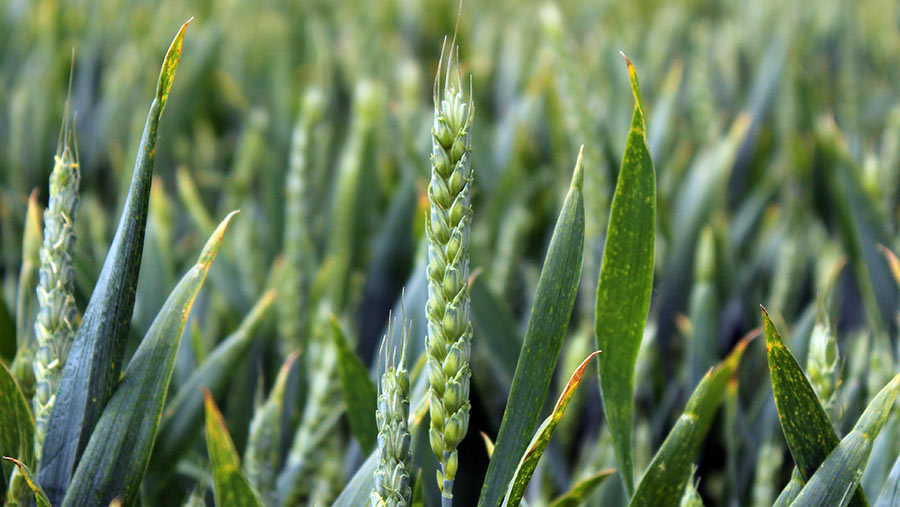Trial results reveal top varieties for organic wheat
 © Oli Hill
© Oli Hill Growing the Group 2 Siskin instead of the benchmark variety could lift organic wheat yields by 1.5t/ha, according to new trial results.
Choosing the right variety is vital for organic wheat farmers, as they rely on a variety’s natural resistance against yield-sapping foliar disease.
Varieties also need to have a vigorous growth habit so they can get away quickly and outcompete weeds, says sales manager Lawrence Morden of Walnes Seeds.
See also: New feed wheat variety offers SDHI fungicide savings
The lack of credible data, however, means many organic farmers rely on the AHDB Recommended List’s (RL) untreated yields as an indicator of how a variety will perform without fungicides.
But untreated RL yields are not suitable for organic systems because the trials do not have the same weed burden found in organic conditions, he says.
To address this, the Suffolk seed merchant and certified organic seed multiplier compared 13 varieties grown under true organic conditions in a trial last season.
Siskin was the top performer yielding 7.47t/ha, closely followed by Crispin at 7.44t/ha (see table).
This differs from the RL untreated yields where Dunston has the highest figure of 92%.
Yellow rust
Siskin and Crispin were also well ahead of the benchmark variety Revelation, which averaged 7.08t/ha. He believes this shortfall was down to yellow rust.
“For several years the benchmark variety for organic wheat has been Revelation. But with our seed multiplier in Norfolk this season, we saw it heavily affected by yellow rust.”
In contrast, Siskin stayed green for about another month and this was reflected in the extra yield of about 1.5t/ha.

